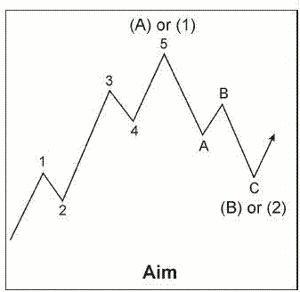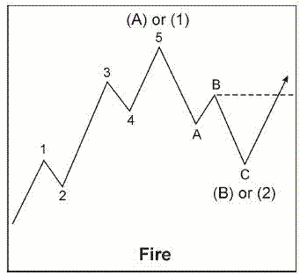Senior analyst Jeffrey Kennedy of Elliott Wave Junctures uses the Elliott Wave Principle as his primary analytical method, in addition to other technical tools.
In this six-lesson series, Jeffrey demonstrates ways to spot trading opportunities using wave analysis and other technical analysis methods.
You can apply these methods across any market and timeframe.
Lesson 1: Ready, Aim...Fire: Knowing When to Place a Trade
A very important question you need to answer if you are going to use the Wave Principle to identify high-confidence trade setups is “When does a wave count become a trade?”
To answer this question, let me draw upon the steps required to fire a firearm:
- Step 1 (Ready) — Hold the rifle or pistol still...very still.
- Step 2 (Aim) — Focus and align your sights.
- Step 3 (Fire) — Pull the trigger without tensing your hand.
If you follow these steps, you should at least hit what you're aiming at, and, with a little practice, you should hit the target's bull's-eye more often than not.
As an Elliottician and a trader, I employ a similar three-step approach to decide when to place a trade. Figure 1 shows a schematic diagram of a five-wave advance followed by a three-wave decline -- let's call it a zigzag. The picture these waves illustrate is what I call the Ready stage.

All charts source: Bloomberg
Click to Enlarge
In Figure 2, prices are moving upward as indicated by the arrow. At this stage, I begin to aim as I watch price action to see if it will confirm my wave count by moving in the direction determined by my labeling.

All charts source: Bloomberg
Click to Enlarge
Once prices do indeed begin to confirm my wave count, I then determine the price level at which I will pull the trigger and Fire (that is, initiate a trade). And, as you can see in Figure 3, that level is the extreme of wave B.

All charts source: Bloomberg
Click to Enlarge
Why do I wait for the extreme of wave B of a zigzag to give way before initiating a position? Simple. By waiting, I allow the market time to either prove or disprove my wave count. Moreover, once the extreme of wave B is exceeded, it leaves behind a three-wave decline from the previous extreme.
As you probably know, three-wave moves are corrections, according to the Wave Principle, and as such, are destined to be more than fully retraced once complete. An additional bonus of this approach is that it allows me to easily and confidently determine an initial protective stop, the extreme of wave C.
Remember, all markets have a wave count; however, not all wave counts offer a trading opportunity. So the next time you think you have a wave count, rather than just blindly jumping in, first steady yourself, wait while you aim, and then—if price action does indeed confirm your wave count—pull the trigger.
Also, it is important to note that this is my way of applying the Wave Principle practically, but it's by no means the only way.
By Jeffrey Kennedy, Editor, Elliott Wave Junctures










